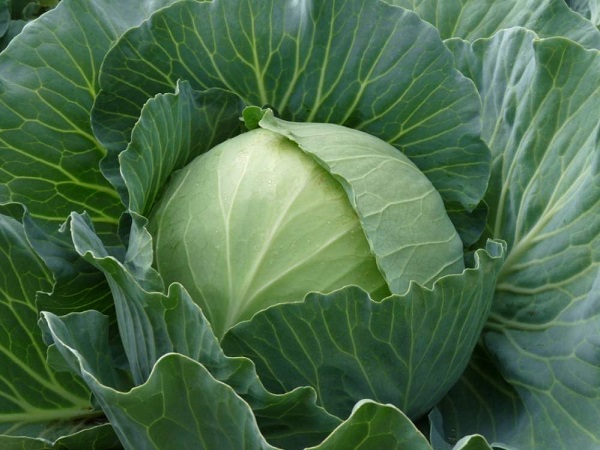This hybrid variety of white cabbage is bred in Holland, registered in the public registry in the nineties. Culture is popular, suitable not only for breeding in the summer cottage, but also brings good benefits in large-scale production, giving excellent yields, even in dense plantations. A full description of the features of the Parela cabbage variety will help you to harvest a large crop.
Table of contents
Description and characteristics of cabbage variety Parel
From the day of planting in the beds until full ripeness takes about two months. The rosette of leaves is compact, located horizontally, slightly raised. The leaves are small or medium in size, the shade is light-green, the edges are even.
The internal structure of the heads is dense, the forms are slightly rounded, their weight ranges from eight hundred grams to one and a half kilograms. There are instances that reach two kilos. Cabbage short or medium. Juicy tender cabbage is great for salads and even pickling.
Advantages and disadvantages
Parel is resistant to cracking and flowering. It is ideal as an early variety, as it does not fear the cold.
The hybrid is known for its transportability and keeping quality, excellent taste. It contains a lot of vitamin C and dry ingredients, which allows it to be used in the preparation of food for children and dieters.
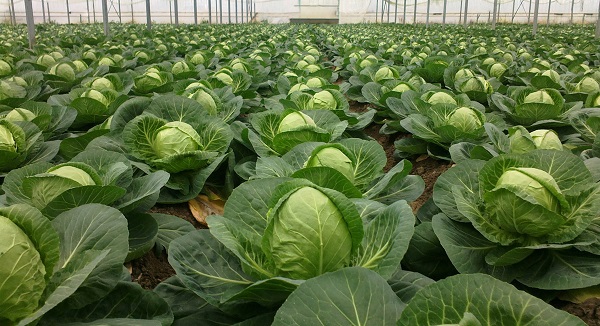
Terms for planting seedlings
To grow Parel, there is no need to expend a lot of effort.However, there are certain rules that should be observed without fail. Planted cabbage in two ways - seedling or seedless. To grow high-quality vegetables, it is necessary to organize the proper care of the culture, to control the growth process. The beds are prepared in advance, dug up in the autumn, before the cold has come.
Sowing cabbage is done in mid-March, not later. Seeds are first germinated. To do this, they are wrapped in a wet cloth and left to warm for several days.
For a culture to grow well, it is necessary to ensure certain conditions:
- sufficient lighting;
- temperature range of twenty to twenty-two degrees. At night, it is allowed to reduce exactly half;
- Airing the room should be done regularly, but the air in it should not be too cold;
- once a week, plants are spilled with a solution of manganese.
Two weeks after the emergence of sprouts, the seedlings are allowed to transplant in separate containers. Here you need to pay attention to the appearance of the plants in order to understand which fertilizers should be applied. When the pale green foliage is necessary to add nitrogen-containing compounds.
When the seedling period comes to an end, potash-phosphorus compounds are introduced. Without fail, two weeks before transplanting the seedlings, it is necessary to begin to harden.
Seedlings that are one and a half to two months old are suitable for planting. When transplanting weakened shoots must be immediately removed. For planting are fit and healthy plants that have managed to form at least five leaves. If the root system is too long, it can be shortened slightly. In this case, the germ will take root better, will not lose moisture.
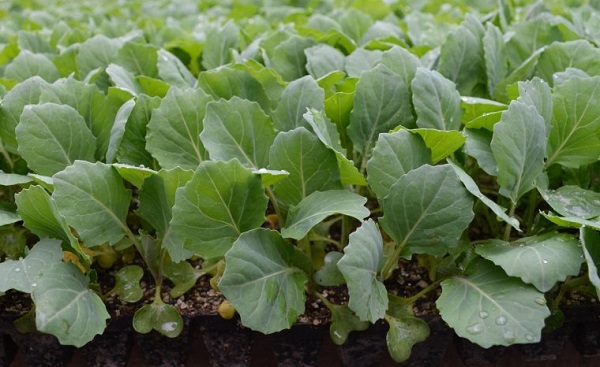
Soil requirements for good growth
Ready substrate is best spilled with a solution of manganese. On the beds are arranged grooves for planting, their depth is one centimeter, the interval between - up to three. Planting material is placed here, covered with earth, and watered.
It is believed that for cabbage is suitable any land, seasoned in a sufficient amount of humus.
Sowing rules
Parela transplanted into the ground is allowed in mid-April - early May. This is best done in the morning or on an overcast day. The sprout deepens into the soil up to the third leaf, the earth is carefully compacted so that there are no voids near the roots. Planting must be irrigated and sprinkled with dry soil. Inter-row necessarily loosened.
Grade care after planting
Vegetables need irrigation, loosening of the soil, the introduction of fertilizing compounds, protection from disease and harmful parasites. If we consider everything in the complex, then the process of care can be divided into certain stages:
- the formation of the first leaves. The period is special. If necessary, carry out replanting. Irrigation is performed once every ten days, the soil after that is compulsory loosened. Ammonium nitrate is used as a top dressing composition;
- comes the second period, which lasts until the formation of heads. The same preparations are used as an ancillary feed, they regularly water the culture, and loosen the ground on the beds. When the heads appear, the culture should be fertilized with potassium nitrate;
- thickening foliage. We continue to water and loosen, we no longer do fertilizing.
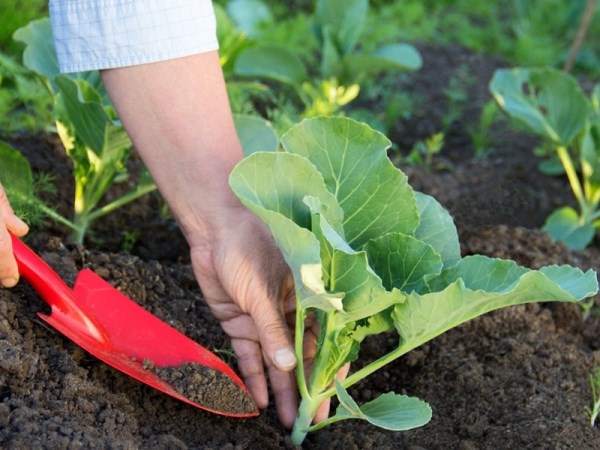
Diseases and their prevention
The hybrid has a good resistance to diseases and pests, but it will not be superfluous to keep track of its condition. At the first stage of growth, cabbage is threatened by leaf beetles, cruciferous flea flowers, moths and cabbage. Tobacco control and wood ash effectively help to combat them. In subsequent growth phases, the crop must be protected from cabbage whiteflies and aphids.
From insects excellent help infusions of tomato leaf, wormwood, garlic and dandelion. With a clear threat, you can use systemic insecticides, but harvesting in this case should begin no earlier than a couple of weeks.
Harvesting and storage rules
Cleaning is carried out as the culture matures. The collection period begins from mid-June, lasts until the fall - it all depends on the time of landing. It is necessary to ensure that the vegetable does not stand in the bud and does not crack.Willingness to harvest is determined by the dense consistence of a kochanchik, the characteristic brilliance of foliage. Clean selectively or one-time, cutting the cabbages at the very surface of the soil.
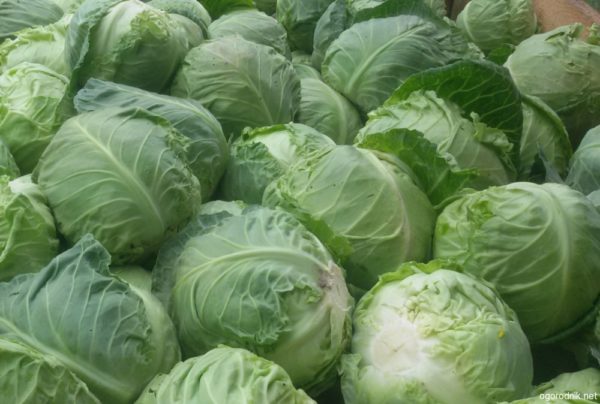
Growing Parel does not create difficulties, if everything is done in a timely manner and closely monitor the development of seedlings. Culture does not need special care, it rarely hurts, it is not very often affected by pest attacks.
